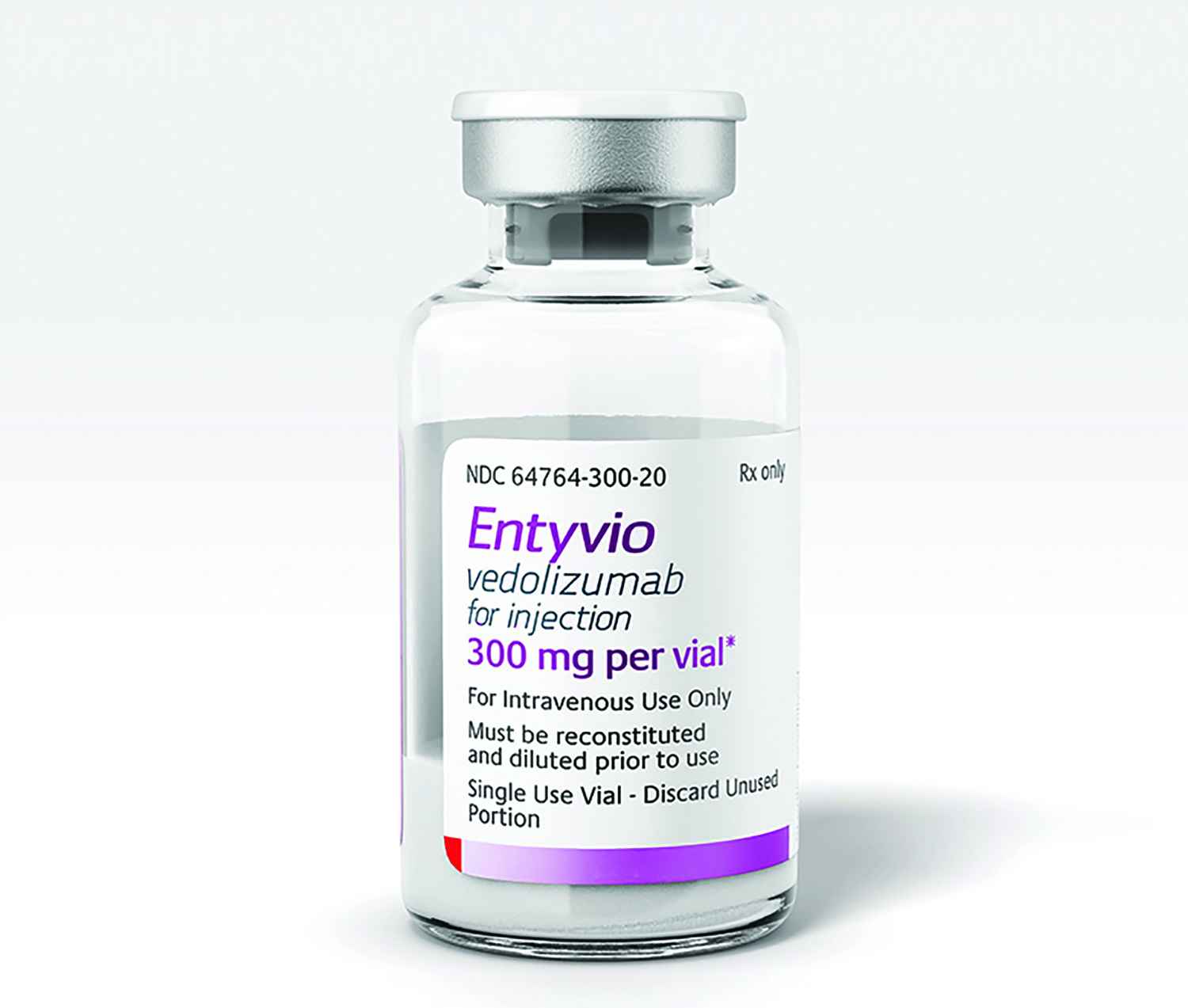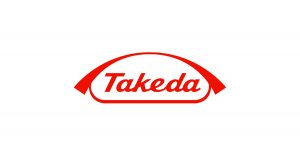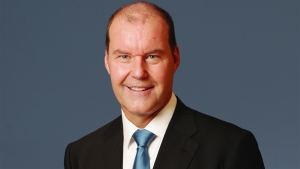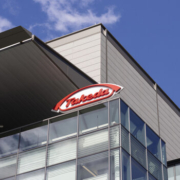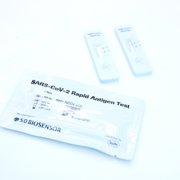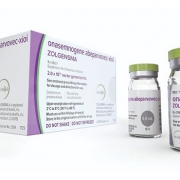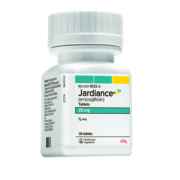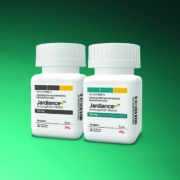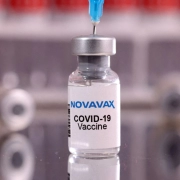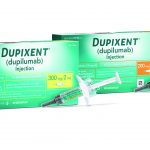Takeda Pharmaceutical 2022: Back to business
With recent years of acquisitions and divestitures in the rearview, Takeda can focus on what matters most: growing its brands.
By Joshua Slatko • [email protected]
Takeda Pharmaceutical
1-1, Nihonbashi-Honcho 2-Chome
Chuo-ku, Tokyo 103-8669, Japan
+81 3 3278-2306 • takeda.com
| Financial Performance | ||||
| 2021 | 2020 | 1Q 2022 | 1Q 2021 | |
| Revenue | $30,099 | $26,968 | $8,201 | $8,008 |
| Net income | $1,941 | $3,172 | $886 | $1,161 |
| Diluted EPS | $1.23 | $2.02 | $0.57 | $0.74 |
| R&D expense | $4,437 | $3,844 | $1,211 | $1,033 |
|
All sales are in millions of dollars and were translated using the Federal Reserve Board’s average rate of exchange in March 2022: ¥118.5774. Takeda’s fiscal year runs from April 1 through March 31. Takeda’s fiscal first quarter runs from April 1 through June 30. |
||||
Best-selling products
All sales are in millions of dollars and were translated using the Federal Reserve Board’s average rate of exchange in March 2022: ¥118.5774. Takeda’s fiscal year runs from April 1 through March 31. Takeda’s fiscal first quarter runs from April 1 through June 30.
2021 sales
- Entyvio $4,401
- Immunoglobulin $3,254
- Vyvanse/Elvanse $2,759
- Advate $999
- Velcade $928
- Leuplin/Enantone $898
- Takhzyro $870
- Takecab-F $864
- Ninlaro $769
- Albumin $759
- Trintellix $694
- Azilva-F $643
- Gattex/Revestive $639
- Elaprase $616
- Adcetris $584
- Adynovate/Adynovi $512
Q1 2022 sales
- Entyvio $1,419
- Immunoglobulin $943
- Vyvanse/Elvanse $843
- Takhzyro $287
- Advate $271
- Leuplin/Enantone $236
- Takecab-F $233
- Ninlaro $200
- Dexilant $188
- Elaprase $187
- Albumin $185
- Gattex/Revestive $185
- Trintellix $180
- Adcetris $169
- Azilva-F $165
- Adynovate/Adynovi $148
- Replagal $148
- Velcade $139
Outcomes Creativity Index Score: 5
- Manny Awards — N/A
- Cannes Lions — N/A
- Clio Health — N/A
- Creative Floor Awards — 4
- London International Awards – N/A
- MM+M Awards — 1
- One Show — N/A
The story of Takeda’s 2021 financial year is that there was no other story. In 2019 the company was in the midst of acquiring Shire; in 2020 Takeda was selling off non-core assets. With all that past, though, last year the company was able to get back to the vanilla task of growing Takeda’s brands – several of which grew quite a bit – and launching new ones.
“We are pleased to report another year of strong performance, driven by our growth products,” said Takeda President and CEO Christophe Weber in the company’s FY 2021 earnings announcement. “I am energized by the impact we are making for patients and by our continued momentum. We are seeing the potential of our innovative pipeline of approximately 40 clinical-stage assets come to life, as demonstrated by the approval and launch of Exkivity and Livtencity.”
Takeda’s top-line revenue for the company’s fiscal year 2021 was $30.1 billion, up 11.6 percent versus FY 2020. Net income, however, declined 38.8 percent to $1.94 billion, and earnings per share were down 75 cents to $1.23. In the first quarter of FY 2022, Takeda’s top line rose by 2.4 percent to $8.2 billion, while net income declined 23.7 percent to $886 million and EPS was down
17 cents to $0.57.
Acquisitions and partnerships
During January, Takeda announced the exercise of its option to acquire Adaptate Biotherapeutics, a UK company focused on developing antibody-based therapeutics for the modulation of variable delta 1 (Vδ1) gamma delta (γδ) T cells. Through the acquisition, Takeda will obtain Adaptate’s antibody-based γδ T cell engager platform, including pre-clinical candidate and discovery pipeline programs. Adaptate’s γδ T cell engagers are designed to specifically modulate γδ T cell-mediated immune responses at tumor sites while sparing damage to healthy cells. The planned acquisition of Adaptate followed Takeda’s recently exercised option to acquire GammaDelta Therapeutics and is intended, company leaders say, to further accelerate the development of innovative γδ T cell-based therapies.
Combining GammaDelta’s cell therapy-based platform and Adaptate’s antibody-based γδ T cell engager platform with Takeda’s research and development organization positions the to be at the leading edge in deploying the full potential of γδ T cells in the fight against cancer.
The planned acquisition, company executives add, complements Takeda’s ongoing efforts to research and develop cell engagers for solid tumor applications, bolstered by the novel T cell engager COBRA platform, which was acquired from Maverick Therapeutics. Adaptate was formed in 2019 as a spin-out company from GammaDelta with investment from Abingworth LLP and Takeda, in which Takeda received an exclusive right to purchase Adaptate for a pre-negotiated upfront payment.
Product performance

The autoimmune brand Entyvio generated sales of $4.4 billion and growth of 21.6 percent for Takeda in FY 2021, helped along by increases in the first-line biologic inflammatory bowel disease population both in ulcerative colitis and Crohn’s disease.
The autoimmune product Entyvio generated sales of $4.4 billion for Takeda in FY 2021, a bounce of 21.6 percent. Growth in the United States was driven by increases in the first-line biologic inflammatory bowel disease population both in ulcerative colitis and Crohn’s disease, while growth in Emerging Markets came due to increased sales in Brazil and China. In the first quarter of FY 2022, sales of Entyvio rose another 34.1 percent to $1.42 billion.
Takeda’s family of immunoglobulin products brought in sales of $3.25 billion for the company in FY 2021, an improvement of 15.2 percent over the previous fiscal year. This was driven in part by strong demand globally for Gammagard Liquid/Kiovig for the treatment of primary immunodeficiency and multifocal motor neuropathy, as well as double-digit growth for the subcutaneous immunoglobulins Cuvitru and Hyqvia. In the first quarter of FY 2022, sales of immunoglobulin rose 37.1 percent to $943 million.
In July, Takeda announced that ADVANCE-1, a randomized, placebo-controlled, double-blind Phase III clinical trial evaluating Hyqvia for the maintenance treatment of chronic inflammatory demyelinating polyradiculoneuropathy (CIDP), met its primary endpoint. Top-line data show that Hyqvia reduced relapse of neuromuscular disability and impairment when used as a maintenance therapy for CIDP, supporting its potential as a facilitated subcutaneous immunoglobulin (fSCIG) solution that could allow for monthly infusion for many CIDP patients.
The pivotal ADVANCE-1 clinical trial evaluated the efficacy, safety and tolerability of Hyqvia in 132 adult patients with CIDP who had been on a stable dosing regimen of intravenous immunoglobulin (IVIG) therapy for at least three months prior to infusion. Analysis of the primary endpoint shows that Hyqvia, when administered at the same dose and dosing interval as the patient’s previous IVIG, reduced CIDP relapse as compared to placebo (9.7 percent versus 31.4 percent, respectively), as measured by Inflammatory Neuropathy Cause and Treatment (INCAT). The majority of patients in the study received a four-week dosing regimen of Hyqvia.
Vyvanse/Elvanse, available for treating ADHD, generated sales of $2.76 billion in FY 2021, up 20.5 percent compared with the previous fiscal year. The brand had been negatively affected by COVID-19 during the course of the pandemic, most notably during periods when stay-at-home restrictions were in place reducing patient visits, subsequent diagnoses and creating temporary discontinuation of medication. In the first quarter of FY 2022, sales of Vyvanse/Elvanse were up another 26.2 percent to $843 million.
Velcade, for multiple myeloma, generated sales of $928 million in FY 2021, an improvement of 8.8 percent. This reflected a rebound in demand after lower sales in the first quarter of the previous fiscal year, when prescribers favored orally administered products over infusions or injections early in the COVID-19 pandemic. In the first quarter of FY 2022, sales of Velcade were cut nearly in half, from $254 million to $139 million, due to multiple generic entrants in the United States starting in May.

Takhzyro sales grew 19 percent to $870 million in FY 2021. The drug earned a new HAE approval in Japan during March 2022.
The hereditary angioedema brand Takhzyro recorded sales of $870 million in FY 2021, an improvement of 19 percent. According to company leaders, this was primarily due to expansion of the prophylactic market, continued geographic expansion, and strong patient uptake. First-quarter FY 2022 sales were up another 33.5 percent to $287 million.
In February, Takeda presented four abstracts including interim real-world data from the observational Phase IV EMPOWER study of Takhzyro as a treatment for people with hereditary angioedema type I or II in North America, as well as findings from a post-hoc analysis of the HELP Open Label Extension study of long-term safety and efficacy of Takhzyro in HAE patients 12 years of age and older. Improvements among new users and sustained outcomes in established users were reported in scores of the Angioedema Quality of Life Questionnaire (AE-QOL), Angioedema Control Test (AECT), and the Treatment Satisfaction Questionnaire for Medication (TSQM-9) when collected every three months, as presented in the EMPOWER IA2 Patient-Reported Outcomes interim data presentation. Additionally, an average of 1 in 5 established Takhzyro users were able to extend treatment from every 2 weeks to 4 weeks as shown in interim data shared in the EMPOWER IA2 Treatment Patterns and Subgroups. Interim real-world data showed marked attack rate reduction of 83 percent and no new safety signals based on patient self-reporting reduced attack rates in the EMPOWER IA2 Effectiveness and Safety. A post-hoc analysis of HELP and HELP OLE showed that reduction of attack rates with Takhzyro were similar for patients previously on androgen treatments as they were for the wider treatment population in these studies in the Switch from Androgens to Takhzyro in HELP 03 and HELP 04.
In March, Japan’s Ministry of Health, Labour, and Welfare (MHLW) approved Takhzyro for prophylaxis against acute attacks of hereditary angioedema in adult and pediatric patients 12 years of age and older in Japan. This approval was primarily based on results of the global Phase III HELP (Hereditary Angioedema Long-term Prophylaxis) Study and the Phase III HELP Study Open-label Extension, in addition to results of a Phase III study evaluating the efficacy and safety of Takhzyro in Japanese patients. Combined, these studies demonstrated the efficacy and safety profile of Takhzyro as a preventive treatment for HAE attacks.
In the HELP study, which included 125 patients with HAE, Takhzyro reduced the mean number of monthly HAE attacks by 87 percent relative to placebo when administered at 300 mg every two weeks and 73 percent relative to placebo when administered at 300 mg every four weeks. A prespecified, exploratory analysis showed that over the entire 26-week study, 44 percent of patients taking Takhzyro 300 mg every two weeks were attack-free versus 2 percent of patients taking placebo. A post-hoc sensitivity analysis showed that 77 percent of the patients receiving Takhzyro 300 mg every two weeks were attack-free during a steady-state (day 70-182) versus 3 percent of patients on placebo.
In June, Takeda announced data from the Phase III SPRING study (NCT04070326) showing positive results of Takhzyro for preventing hereditary angioedema attacks in patients 2 to <12 years of age, which were consistent with earlier studies in adult and adolescent patients. There are currently no long-term prophylactic treatments approved for HAE patients younger than 6 years.
In this study, HAE patients received a dose of 150 milligrams every 4 weeks for ages 2 to <6 years and every 2 weeks for ages 6 to <12 years. Takhzyro reduced the rate of HAE attacks in children by a mean of 94.8 percent compared to baseline, from 1.84 attacks per month to 0.08 attacks during treatment. The majority of patients (76.2 percent) were attack-free during the 52-week treatment period with an average of 99.5 percent attack-free days. These data will be submitted to global regulatory authorities to evaluate a potential label expansion for Takhzyro to include the younger patient population.
Takecab, for acid-related diseases, enjoyed sales growth of 20.8 percent to $864 million in FY 2021. According to Takeda leaders, this was driven by the expansion of new prescriptions in the Japanese market due to Takecab’s efficacy in reflux esophagitis and the prevention of recurrence of gastric and duodenal ulcers during low-dose aspirin administration. In the first quarter of FY 2022, sales of Takecab rose 13.7 percent to $233 million.
Takeda’s albumin family of products enjoyed sales of $759 million in FY 2021, up 56.2 compared with the previous fiscal year. According to company leaders, this was driven by higher sales following the resolution of the supply interruption which impacted human albumin for release in China in the second half of the previous fiscal year, in addition to strong Flexbumin demand in China and the United States. In the first quarter of FY 2022, albumin sales rose 23.3 percent to $185 million.
Sales of Trintellix, for major depressive disorder, totaled $694 million in FY 2021, an improvement of 19.4 percent. Takeda leaders say this was due to increasing prescriptions in the United States and in Japan. In the first quarter of FY 2022, Trintellix sales rose another 19.2 percent to $180 million.
Gattex/Revestive, for short bowel syndrome, generated sales of $639 million for Takeda in FY 2021, up 17.2 percent compared to the previous fiscal year. According to company executives, this was primarily due to increased market penetration and new country launches including Japan. In the first quarter of FY 2022, sales of Gattex/Revestive rose 20.9 percent to $185 million.
The malignant lymphoma treatment Adcetris brought in sales of $584 million in FY 2021, an improvement of 16.6 percent. This was led by strong growth in sales in Growth and Emerging Markets, particularly in China where Adcetris was approved in May 2020. In the first quarter of FY 2022, sales of Adcetris were up by 16.6 percent again, to $169 million.
In May, Takeda and Seagen Inc. released overall survival data from the Phase III ECHELON-1 clinical trial of an Adcetris plus chemotherapy combination. Data from the ECHELON-1 trial demonstrated a statistically significant improvement in OS in adult patients with previously untreated Stage III or IV classical Hodgkin lymphoma treated with Adcetris plus doxorubicin, vinblastine, and dacarbazine (A+A526VD) versus doxorubicin, bleomycin, vinblastine, and dacarbazine (ABVD). With approximately six years median follow up (73 months), patients receiving A+AVD had a 41 percent reduction in the risk of death, with an estimated OS rate of 93.9 percent at six years.
In the pipeline
In February, Takeda announced the first six-month interim analysis results from INSPIRE, in which clinical remission was observed in 65 percent of patients in both cohorts who were evaluated at six months. INSPIRE is a European observational, multicenter, post-approval, open-enrollment study (EUPAS24267) evaluating the real-world effectiveness and safety of Alofisel in patients with Crohn’s disease and complex perianal fistulas. Also, in ADMIRE-CD, a Phase III trial investigating the efficacy and safety of Alofisel for the treatment of complex perianal fistulas in adult patients with non-active/mildly active luminal CD, a significantly greater proportion of patients in the Alofisel group, compared to the control group, achieved the primary endpoint of combined remission at a 24 week follow-up (51.5 percent versus 35.6 percent), and this was maintained over 52 weeks (56.3 percent versus 38.6 percent).
In April, the Japan Ministry of Health, Labour, and Welfare (MHLW) approved Nuvaxovid, a novel recombinant protein-based COVID-19 vaccine, for primary and booster immunization in individuals aged 18 and older. Novavax licensed and transferred its manufacturing technologies to enable Takeda to develop and manufacture the vaccine at its facility in Hikari.
The approval was based on Takeda’s NDA filing which included interim results from a Phase I/II study conducted by Takeda in Japan and several studies conducted by Novavax, including two pivotal Phase III trials in the U.K., the United States and Mexico, and Phase I/II studies in Australia and the United States. Interim results from the Phase I/II study in Japan were positive and consistent with previously reported trial results. No serious adverse events were reported in this study and the vaccine candidate was well-tolerated. Additional safety and efficacy data were filed to support booster immunization, including a Phase II study conducted by Novavax in South Africa evaluating a booster dose given six months after primary immunization.
Also in April, Takeda released several new analyses of Livtencity in the transplant and infectious disease communities. The first was an exploratory analysis of the Phase III SOLSTICE trial evaluating the impact of treatment with Livtencity compared to conventional antiviral therapies on healthcare utilization. This analysis aimed to quantify the healthcare resource utilization experience of patients requiring treatment for post-transplant cytomegalovirus (CMV). During the treatment phase, 31.9 percent of patients treated with Livtencity had at least one hospitalization compared to 36.8 percent of patients treated with conventional therapies. Adjusting for time on treatment, the Livtencity treatment group had a 34.8 percent reduction compared to the conventional therapy group. The length of hospital stay during the treatment phase (adjusting for time on treatment) was 13.27 days/person/year in Livtencity-treated patients compared to 28.73 for those conventionally treated, a 53.8 percent decrease.
The second analysis included data from population pharmacokinetic and pharmacodynamic models based on Phase I, II, and III (SOLSTICE) studies, which were developed to characterize Livtencity plasma concentrations and exposure-response relationships. PK/PD modeling results suggested that dose adjustments of Livtencity will not be required in adult transplant patients for the treatment of CMV infection regardless of age, body weight, sex, race, transplant type, baseline plasma CMV DNA, or presence of CMV mutations.
The third analysis included data from a subgroup analysis of the Phase III SOLSTICE trial assessing median time to first confirmed CMV DNA level <LLOQ. Post-hoc analyses by subgroups were consistent with previously reported results, demonstrating a shorter time to confirmed CMV DNA level <LLOQ for Livtencity compared to conventional antiviral therapies.
In patients with low baseline viral load, median time to first CMV DNA level <LLOQ was 15 days for Livtencity and 22 days for conventional antiviral therapies, and 43 and 44 days respectively for patients with intermediate/high viral load.
In June, Takeda and partner developer Arrowhead Pharmaceuticals Inc. announced that results from a Phase II clinical study (AROAAT-2002) of investigational fazirsiran (TAK-999/ARO-AAT) for the treatment of liver disease associated with alpha-1 antitrypsin deficiency (AATD) were published in the New England Journal of Medicine.
Fazirsiran is a potential first-in-class investigational RNA interference (RNAi) therapy designed to reduce the production of mutant alpha-1 antitrypsin protein (Z-AAT) as a potential treatment for the rare genetic liver disease associated with AATD. Z-AAT accumulation is believed to be the cause of progressive liver disease in patients with AATD. Reducing production of the inflammatory Z-AAT protein is expected to halt the progression of liver disease and potentially allow the liver to regenerate and repair. Fazirsiran was granted Breakthrough Therapy Designation in July 2021 and Orphan Drug Designation in February 2018 by the FDA for the treatment of AATD.
In the study, all patients (n=16) had reductions in accumulated total mutant AAT protein (Z-AAT) in the liver (median percentage change at week 24 or 48, −83.3 percent. A substantial mean reduction from baseline in serum Z-AAT concentration was observed in all cohorts, with a nadir of −90±5 percent in the 200-mg cohort and −87±6 percent in the 100-mg cohort at week 6. Reductions in liver Z-AAT concentrations were associated with histologic improvements in inflammation.
Most patients had a high histologic PAS-D globule burden at baseline (mean score, 7.4; scores range from 0 to 9, with higher scores indicating a greater globule burden). After treatment, all patients had a decreased globule burden, with the mean score decreasing to 2.3 at week 24 or 48 (69 percent reduction).
Biomarkers of liver injury were also reduced. At baseline, mean ALT concentrations were above the upper limit of the normal range in all cohorts. After treatment, ALT concentrations decreased in all cohorts from week 16 through week 52. All 12 patients with ALT concentrations above the upper limit of the normal range at baseline had reductions to normal concentrations at week 52.
Regression of fibrosis of at least one stage occurred in 7 of 12 patients receiving the 200-mg dose (cohorts 1 and 2), including two patients with cirrhosis, and in none of three patients with evaluable biopsies who received the 100-mg dose (cohort 1b). Two patients in cohort 2 had progression of fibrosis from baseline to week 48 (both from F2 to F3), although both had profound reductions in PAS-D globule burden (scores of 9 and 4 at baseline and 0 for both at week 48) and reduced ALT and γ-glutamyltransferase concentrations with treatment.
In August, the Indonesia National Agency for Drug and Food Control, Badan Pengawas Obat dan Makanan (BPOM), approved Takeda’s dengue vaccine Qdenga for the prevention of dengue disease caused by any serotype in individuals 6 years to 45 years of age. Qdenga is the only dengue vaccine approved in Indonesia for use in individuals regardless of previous dengue exposure and without the need for pre-vaccination testing.
The approval was based on results through three years after vaccination from the ongoing Phase III Tetravalent Immunization against Dengue Efficacy Study (TIDES) trial that enrolled more than 20,000 healthy children and adolescents ages 4 to 16 years living in dengue-endemic areas in Asia and Latin America. Qdenga demonstrated continued overall protection against dengue illness and hospitalization three years after vaccination, regardless of an individual’s previous dengue exposure.

